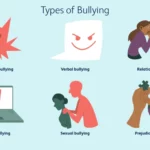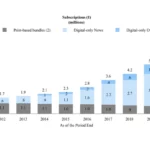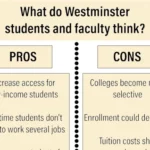As teachers, we have a responsibility to create a safe and supportive learning environment for our students. Unfortunately, bullying is a pervasive issue that can disrupt this environment and negatively impact our students’ mental health and academic success. In this article, we will explore the various forms of bullying, how to identify and prevent bullying, and resources available for teachers to learn more about this important topic. By taking action and utilizing available resources, we can work towards promoting inclusivity and ensuring that all of our students feel valued and supported.
Contents
What is Bullying?

Bullying is a complex behavior that takes many forms and can happen in many different contexts. According to UNESCO research, 32% of students experience bullying while attending school. Bullying can take the form of physical, verbal, emotional, and cyber attacks, and it can happen to anyone, regardless of age, gender, or background. Examples of physical bullying include hitting, pushing, and shoving, while verbal bullying includes teasing, name-calling, and spreading rumors. Emotional bullying involves excluding someone from a group, while cyberbullying can take many forms, including online harassment or spreading rumors on social media. Understanding the different types of bullying is an important first step in preventing and addressing this pervasive problem.
Definition of bullying
Bullying can be defined as repeated aggressive behavior towards an individual or group of individuals with the intention of causing harm or distress. This behavior can take various forms, including physical, verbal, emotional, and cyber. Physical bullying involves physically harming or threatening to harm someone, while verbal bullying includes name-calling, teasing, and taunting. Emotional bullying is characterized by behaviors that undermine an individual’s self-esteem, such as spreading rumors or excluding them from social activities. Cyberbullying is a relatively new form of bullying that involves using technology to harass, intimidate, or embarrass someone. It is important to note that bullying is not limited to children and adolescents, as it can occur in any setting and at any age.
Types of bullying (physical, verbal, emotional, cyber)
Bullying can take many forms, and it is important for teachers to be aware of each of them. The four most common types of bullying are physical, verbal, emotional, and cyberbullying.
Physical bullying involves using physical force to hurt or harm someone. This can include hitting, kicking, shoving, or even stealing or damaging someone’s property. Physical bullying can be easy to spot, but it can also be subtle, such as tripping someone in the hallway or pushing them into a locker.
Verbal bullying involves the use of words to hurt or humiliate someone. This can include teasing, name-calling, making fun of someone’s appearance or abilities, or spreading rumors or lies about them. Verbal bullying can be difficult to detect, as it often happens behind closed doors or in private conversations.
Emotional bullying involves manipulating or controlling someone’s emotions or relationships with others. This can include excluding someone from a social group, spreading rumors or lies about them, or even threatening them with physical harm. Emotional bullying can be especially damaging, as it can leave the victim feeling isolated and alone.
Cyberbullying involves using technology to hurt or harm someone. This can include sending mean or threatening messages through social media or text messages, spreading rumors or lies about someone online, or even hacking into someone’s accounts. Cyberbullying can be difficult to detect, as it often happens outside of school and in private online spaces.
By understanding the different types of bullying, teachers can better identify and address bullying behavior in their classrooms. It is important to remember that all forms of bullying are harmful and can have long-lasting effects on the victim.
Examples of each type of bullying
Examples of Each Type of Bullying
Bullying can take many different forms, and it is important to understand each type in order to effectively identify and prevent it. Here are some examples of each type of bullying:
Physical bullying:
- Hitting, kicking, or punching
- Pushing or shoving
- Stealing or damaging possessions
- Forcing someone to do something against their will
Verbal bullying:
- Name-calling or teasing
- Insulting or making fun of someone
- Spreading rumors or gossiping
- Threatening or intimidating someone with words
Emotional bullying:
- Excluding someone from a group or activity
- Ignoring or isolating someone
- Using body language or facial expressions to intimidate or humiliate
- Manipulating or controlling someone
Cyberbullying:
- Sending hurtful or threatening messages online or via text
- Posting embarrassing or mean-spirited content on social media
- Sharing someone’s personal information without their consent
- Creating fake profiles to harass or bully someone
It is important to remember that these are just a few examples of each type of bullying, and that bullying can take many different forms. As a teacher, it is important to be vigilant and aware of any signs of bullying in your classroom, and to take steps to prevent and address it.
How to Identify Bullying

Identifying bullying can be a challenging task for teachers, but it is critical to ensure a safe and inclusive learning environment. Some signs to look out for include changes in behavior, unexplained injuries, and social withdrawal. If you suspect a student is experiencing bullying, approach them with empathy and listen actively to their concerns. It’s also essential to reflect on your own behavior as a teacher and identify any unintentional perpetuation of bullying. By taking proactive steps to identify and address bullying, teachers can create a supportive environment that promotes positive social and emotional development for all students.
Signs to look out for
Signs to Look Out For
It is important for teachers to be aware of the signs that a student may be experiencing bullying, so that they can intervene and provide support. Some signs to look out for include changes in behavior, such as becoming withdrawn or anxious, unexplained injuries, loss of personal belongings, lowered self-esteem and academic performance, and avoidance of certain situations or places.
It is important to pay attention to verbal and nonverbal cues that a student may be experiencing bullying. They may exhibit fear or anxiety when asked about their day or school, refusal to attend school or participate in activities, and changes in eating or sleeping habits.
It is important to keep in mind that these signs may not necessarily indicate that a student is being bullied, but they are indicators that further investigation may be necessary. As a teacher, it is crucial to create a welcoming and supportive environment where students feel comfortable coming forward with their concerns.
By being aware of the signs of bullying, teachers can take action and provide support to students who may be struggling. This can help prevent the negative impacts of bullying, such as lowered self-esteem and academic performance, and create a safer and more inclusive classroom environment.
How to approach students who may be experiencing bullying
Approaching students who may be experiencing bullying can be a delicate matter, but it is important to do so to provide support and help stop the bullying. Here are some steps to take:
1. Start by creating a safe and non-judgmental environment where the student feels comfortable opening up to you. Find a private space where you can talk one-on-one.
2. Show empathy and active listening skills. It is important to let the student know that you are there for them and that you believe them. Use phrases like “I am sorry this is happening to you” and “I am here to help”.
3. Ask open-ended questions to encourage the student to share more about their experience. Avoid questions that could come across as blaming or accusatory, such as “What did you do to provoke the bully?” Instead, try asking questions like “Can you tell me more about what happened?” or “How did that make you feel?”
4. Validate their feelings and experiences. Let them know that what they are feeling is valid and that they are not alone. You could say something like “I can’t imagine how hard this must be for you, but I am here to help.”
5. Work with the student to develop a plan. Ask the student what they would like to see happen next and what steps they feel comfortable taking. Offer suggestions if needed and work with the student to create a plan that feels safe and realistic for them.
Remember, it is important to take all reports of bullying seriously and to follow your school’s procedures for reporting and addressing bullying.
How to identify if you, as a teacher, are unknowingly perpetuating bullying
As teachers, it is our responsibility to ensure that our classrooms are safe and inclusive environments for all students. However, sometimes we may unknowingly perpetuate bullying through our actions or words. It’s important to be aware of these behaviors and take steps to address them. One way to identify if you are unintentionally perpetuating bullying is to reflect on your interactions with students. Do you treat all students fairly and equally, or do you have favorites? Do you make comments or jokes that could be hurtful or offensive to certain students? Another way to identify if you are perpetuating bullying is to observe your classroom dynamics. Do certain students always seem left out or excluded from group activities? Do you allow certain students to dominate class discussions while ignoring others? These are all signs that you may be perpetuating a culture of bullying in your classroom. It’s important to take action to address these issues by educating yourself on inclusive teaching practices, being aware of your own biases, and actively working to create a safe and supportive learning environment for all students. Remember, as a teacher, you have the power to make a difference in the lives of your students and prevent bullying from taking place in your classroom.
How to Prevent Bullying

Creating a safe and inclusive classroom environment is key to preventing bullying. To promote inclusivity, teachers can encourage open communication, facilitate group activities, and celebrate diversity. Establishing clear rules and consequences for negative behavior can also help prevent bullying. Creating a safe and supportive learning environment involves ensuring that students feel heard and valued, and providing access to resources for those who may need additional support. Encouraging students to be upstanders, rather than bystanders, can also help to prevent bullying. By promoting a culture of kindness and empathy, teachers can create a positive classroom environment where bullying is less likely to occur.
Ways to promote inclusivity in the classroom
Creating an inclusive classroom environment is crucial for preventing bullying. By promoting inclusivity, students feel valued and respected, which can reduce the likelihood of bullying occurring. Here are some ways to promote inclusivity in the classroom:
1. Get to know your students. Take the time to learn about your students’ backgrounds, cultures, and interests. This can help you better understand their perspectives and create a classroom environment that is welcoming to all.
2. Encourage open communication. Create a classroom culture where students feel comfortable sharing their thoughts and ideas. Encourage active listening and respectful dialogue to help students feel heard and valued.
3. Incorporate diverse materials. Use textbooks, literature, and other materials that represent a variety of cultures, races, genders, and abilities. This can help students see themselves and others in a positive light and reduce the likelihood of bias and discrimination.
4. Embrace differences. Celebrate the unique qualities and strengths of each student. Encourage students to share their talents and skills with the class.
5. Establish clear expectations for behavior. Create a code of conduct that emphasizes respect, kindness, and empathy. Review these expectations regularly and hold students accountable for their actions.
6. Provide support for students who are struggling. Offer resources and support for students who may be experiencing difficulty in the classroom. This can include tutoring, counseling, or other services.
By promoting inclusivity in the classroom, you can create a safe and welcoming environment for all students. This can help reduce the likelihood of bullying and ensure that all students feel valued and respected.
How to create a safe and supportive learning environment
Creating a safe and supportive learning environment is crucial to preventing bullying in the classroom. As a teacher, there are several strategies you can use to foster a positive and inclusive environment for your students.
Establish clear expectations: Set clear expectations for behavior and make sure students understand the consequences of bullying. Encourage students to treat each other with respect and kindness.
Encourage communication: Encourage open communication among students and create opportunities for them to share their thoughts and feelings. By fostering a sense of community, students are more likely to feel supported and less likely to engage in bullying.
Address conflicts quickly: When conflicts arise, address them quickly and fairly. Listen to all sides of the story and work with students to find a solution that is agreeable to everyone involved.
Model positive behavior: As a teacher, it’s important to model positive behavior and treat students with respect. By demonstrating empathy and kindness, you set an example for your students to follow.
Provide support: Provide support for students who may be experiencing bullying or other forms of harassment. Let students know that you are there to help and provide resources for them to seek additional support if needed.
By following these strategies, you can create a safe and supportive learning environment for your students and prevent bullying from occurring in the classroom. Remember, as a teacher, you have the power to make a difference in the lives of your students.
Ways to encourage students to be upstanders instead of bystanders
Encouraging students to become upstanders, rather than passive bystanders, is crucial in preventing bullying. Here are some effective ways to encourage students to take action:
| 1. Teach empathy: | Empathy is the ability to understand and share the feelings of others. Teaching empathy can help students to recognize the pain and hurt caused by bullying and to be more inclined to help their peers. |
| 2. Create a safe environment: | Students are more likely to stand up against bullying when they feel safe and supported. As a teacher, it’s important to create a classroom environment that is inclusive, respectful, and free from bullying. |
| 3. Provide resources: | Provide students with resources such as books, videos, and articles that focus on bullying prevention and ways to be an upstander. This can help students to develop a better understanding of bullying and how to take action. |
| 4. Lead by example: | As a teacher, it’s important to model positive behavior and to take a stand against bullying. When students see their teacher taking action, they are more likely to follow suit. |
| 5. Encourage reporting: | Encourage students to report bullying when they see it happening. Let them know that reporting bullying is not tattling, but rather a way to help keep their peers safe. |
| 6. Recognize upstanders: | Recognize and celebrate students who take action and become upstanders. This can help to reinforce positive behavior and encourage other students to take action as well. |
By encouraging students to become upstanders, we can create a safer and more inclusive learning environment for all students.
Resources for Teachers
As a teacher, it is important to stay informed and educated on the topic of bullying. There are many resources available to help you learn more about bullying and how to prevent it in your classroom. Consider taking advantage of training and webinars offered by organizations focused on anti-bullying efforts. Additionally, many companies offer discounts on anti-bullying resources for teachers. By utilizing these resources, you can create a safe and supportive learning environment for all students and be an effective upstander against bullying.
Training and webinars available to learn more about bullying
As a teacher, it’s important to stay informed about the latest research and strategies for preventing bullying in the classroom. There are several training and webinar options available that can provide valuable information and resources.
1. StopBullying.gov offers a free online training course called “Bullying Prevention: Train the Trainer” that is designed to help educators and other professionals develop the skills and knowledge needed to prevent and respond to bullying. The course covers topics such as understanding bullying, identifying warning signs, and responding appropriately.
2. The National Center for School Safety offers a variety of webinars on topics such as cyberbullying, social-emotional learning, and school safety planning. These webinars are designed to provide practical strategies and resources for creating safe and supportive learning environments.
3. The Olweus Bullying Prevention Program offers both online and in-person training options for teachers and other school staff. The program is evidence-based and focuses on creating a positive school climate through strategies such as schoolwide rules and expectations, adult supervision, and peer support.
4. The National Bullying Prevention Center offers a series of webinars on topics such as cyberbullying, LGBTQ+ bullying, and bullying prevention in early childhood education. These webinars are designed to provide educators with practical tools and strategies for addressing bullying in their classrooms.
5. The American Federation of Teachers offers a variety of professional development opportunities for teachers, including online courses on topics such as creating safe and supportive classrooms and promoting positive behavior.
By taking advantage of these training and webinar options, teachers can stay up-to-date on the latest research and strategies for preventing bullying in the classroom. This knowledge can help create a safe and supportive learning environment for all students.
Discounts available for teachers on anti-bullying resources
As a teacher, you play a vital role in preventing and addressing bullying in your school and classroom. To support you in this effort, many anti-bullying resources are available at discounted rates for educators. These resources include books, curriculums, training programs, and more.
One example of a discounted resource is the “Bullying Prevention Program” from XYZ publishers. This program includes a comprehensive curriculum for grades K-12, teacher training materials, and parent resources. As a teacher, you can receive a 20% discount on this program by using the code “TEACHBULLYFREE” at checkout.
Another resource available at a discounted rate is the “No Bullying Zone” poster set from ABC posters. These posters feature positive messages promoting kindness and respect and can be displayed throughout your classroom or school. Teachers can receive a 10% discount on this poster set by entering the code “BULLYFREEZONE” at checkout.
Additionally, many organizations offer free or low-cost training and webinars for educators on bullying prevention and intervention. The National Education Association (NEA) offers a variety of online courses on bullying prevention, including “Creating Safe Spaces for LGBT Students” and “Bullying Prevention Strategies for Teachers.” These courses are available to NEA members for free or at a discounted rate.
By taking advantage of these discounted resources, you can enhance your knowledge and skills in preventing and addressing bullying in your classroom and school. Remember, every action you take as a teacher can make a difference in creating a safe and inclusive learning environment for all students.
Conclusion
As teachers, it is our responsibility to not only educate our students but also create a safe and supportive learning environment for them. Identifying and preventing bullying is an essential part of this responsibility. By being aware of the signs of bullying and taking action to prevent it, we can create an inclusive and respectful classroom community where all students feel valued and accepted. Utilizing the available resources, such as training and webinars, and taking advantage of discounts on anti-bullying resources can help us in this effort. Let’s work together to promote kindness and respect in our classrooms and encourage our students to be upstanders instead of bystanders.
Importance of identifying and preventing bullying as a teacher
As a teacher, it is crucial to identify and prevent bullying in the classroom. The effects of bullying can be long-lasting and can significantly impact a student’s academic and social success. By identifying bullying early on, teachers can take steps to prevent it from escalating and ensure that all students feel safe and supported in the classroom.
One of the most important reasons to identify and prevent bullying is to promote a positive learning environment. When students feel safe and supported, they are more likely to participate in class and engage with the material. On the other hand, when students are being bullied, they may feel anxious, depressed, or isolated. This can lead to decreased motivation and academic performance, which can have a long-term impact on their future success.
Another reason to identify and prevent bullying is to cultivate a culture of inclusivity and respect. By taking steps to prevent bullying, teachers can teach students the importance of treating others with kindness and empathy. This can help to create a supportive classroom environment where all students feel valued and respected.
As a teacher, it is important to be proactive in identifying and preventing bullying. This may involve talking to students, observing their behavior, and taking steps to address any issues that arise. By being vigilant and responsive, teachers can help to create a safe and supportive learning environment for all students.
Identifying and preventing bullying is crucial for teachers who want to promote a positive learning environment and cultivate a culture of inclusivity and respect. By taking steps to prevent bullying, teachers can help to ensure that all students feel safe and supported in the classroom, which can have a long-lasting impact on their academic and social success.
Encouragement to take action and utilize available resources
As teachers, it is our responsibility to create a safe and inclusive learning environment for all students. Bullying can have long-lasting effects on a child’s mental and emotional well-being, which is why identifying and preventing it should be a top priority. It may seem overwhelming, but there are many resources available to help you take action. One of the best ways to start is by taking advantage of the training and webinars available on the subject. By learning more about bullying, you can develop a better understanding of how to prevent it and how to support students who may be experiencing it. Additionally, there are discounts available on anti-bullying resources for teachers, making it easier to access the tools you need to create a safe and supportive environment. Remember, you are not alone in this effort. It takes a collective effort to prevent bullying, and by utilizing available resources and taking action, you can make a positive impact on your students’ lives. So, let’s take action together and make our classrooms a safe and welcoming space for all students.
Frequently Asked Questions
FAQs About Bullying Prevention for Teachers
1. How can I make sure my students feel safe and supported in the classroom?
Creating a positive and inclusive environment is key. Encourage open communication and respect for diversity, and make sure students know that bullying behavior will not be tolerated.
2. What are some effective strategies for preventing cyberbullying?
Teach students about responsible internet use, set clear expectations for online behavior, and monitor online activity. Encourage students to speak up if they witness or experience cyberbullying.
3. How can I approach a student who I suspect may be experiencing bullying?
Be supportive and non-judgmental. Listen to the student’s concerns and work with them to develop a plan for addressing the situation. Make sure the student knows that they are not alone and that you are there to help.
4. What should I do if I witness bullying behavior between students?
Intervene immediately and calmly. Address the behavior and make it clear that it is not acceptable. Follow up with the students involved and their parents to ensure that the issue is resolved.
5. What role can bystanders play in preventing bullying?
Bystanders can be powerful allies in bullying prevention. Encourage students to speak up if they witness bullying behavior and provide them with tools for effective intervention.
6. How can I ensure that I am not unknowingly perpetuating bullying behavior in the classroom?
Reflect on your own behavior and interactions with students. Be aware of your biases and work to create an inclusive environment. Seek feedback from colleagues and students to identify areas for improvement.
7. Are there resources available for teachers who want to learn more about bullying prevention?
Yes, there are many resources available, including training and webinars, books, and online courses. Look for resources that are evidence-based and tailored to your specific needs.
8. How can I encourage students to become upstanders instead of bystanders?
Teach students about the importance of standing up to bullying behavior and provide them with tools for effective intervention. Celebrate and acknowledge students who demonstrate upstander behavior.
9. What should I do if a student reports bullying that occurred outside of school?
Take the report seriously and follow appropriate reporting procedures. Provide support to the student and their family, and work with community resources as needed.
10. What is the most important thing I can do as a teacher to prevent bullying?
Be proactive, stay informed, and create a culture of respect and inclusion in your classroom. Take all reports of bullying seriously and work with students, parents, and colleagues to address the issue effectively.






